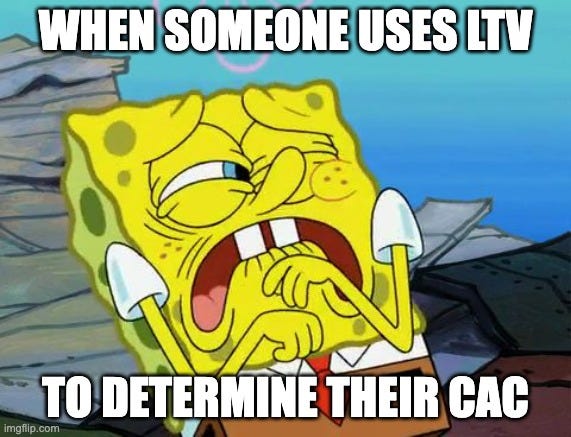Stop optimizing for a CAC:LTV ratio of 1:3

🌈 Abstract
The article discusses the flaws in the common practice of optimizing for customer acquisition cost (CAC) and customer lifetime value (LTV) ratios, and proposes an alternative approach focused on payback period and growth loops.
🙋 Q&A
[01] Why is optimizing for the lowest possible CAC a flawed strategy?
- The article argues that optimizing for the lowest CAC without considering the context can be detrimental to a company's growth. It provides an example where Company A has a lower CAC of $100 but takes 3 years to recoup the cost, while Company B has a higher CAC of $1,000 but only takes 3 months to recover the cost and has an additional $2,000 upside.
- The key point is that the payback period and potential upside are more important than just the raw CAC number.
[02] Why is the common CAC:LTV ratio of 1:3 a flawed method?
- The article explains that using the 1:3 CAC:LTV ratio can lead to an unsustainable payback period, as the LTV is heavily back-weighted in terminal value (revenue from customers in 3+ years).
- This means companies may have to wait 2-5 years to see a return on their acquisition investment, which is not feasible for most businesses.
- The article also notes that relying on historical LTV data to predict future performance is unreliable, as past behavior does not guarantee future results.
[03] What is the issue with using "Lifetime Revenue" (LTR) as an alternative metric?
- The article states that LTR, also known as "Adjusted LTV", is an even worse metric than LTV.
- LTR often just includes the "short-term value" (revenue in the first 1-3 years), and artificially caps the "lifetime" value, making it not truly representative of lifetime value.
- The article questions the rationale behind using this metric, as it is not a true "lifetime" value.
[04] What is the recommended approach instead of focusing on CAC and LTV?
- The article advocates for a focus on growth loops and payback period rather than CAC and LTV.
- The goal should be to continuously optimize the velocity at which the company can get a return on its acquisition spend. Growth loops are more robust than linear funnels as they create a self-reinforcing cycle of acquisition, engagement, and retention.
- The article suggests aiming for a 12-18 month payback period, especially in B2B businesses, rather than basing strategies on long-term LTV projections.
[05] What are the key benefits of focusing on payback period and growth loops?
- Aligns the entire organization (not just marketing/acquisition) towards the common goal of accelerating the payback period.
- Reduces dependence on long-term LTV forecasting, which is unreliable.
- Encourages optimization efforts in the product itself to improve activation, expansion, retention, and monetization - all of which impact the payback period.
- Creates a more sustainable and robust growth model compared to linear funnels.
Shared by Daniel Chen ·
© 2024 NewMotor Inc.